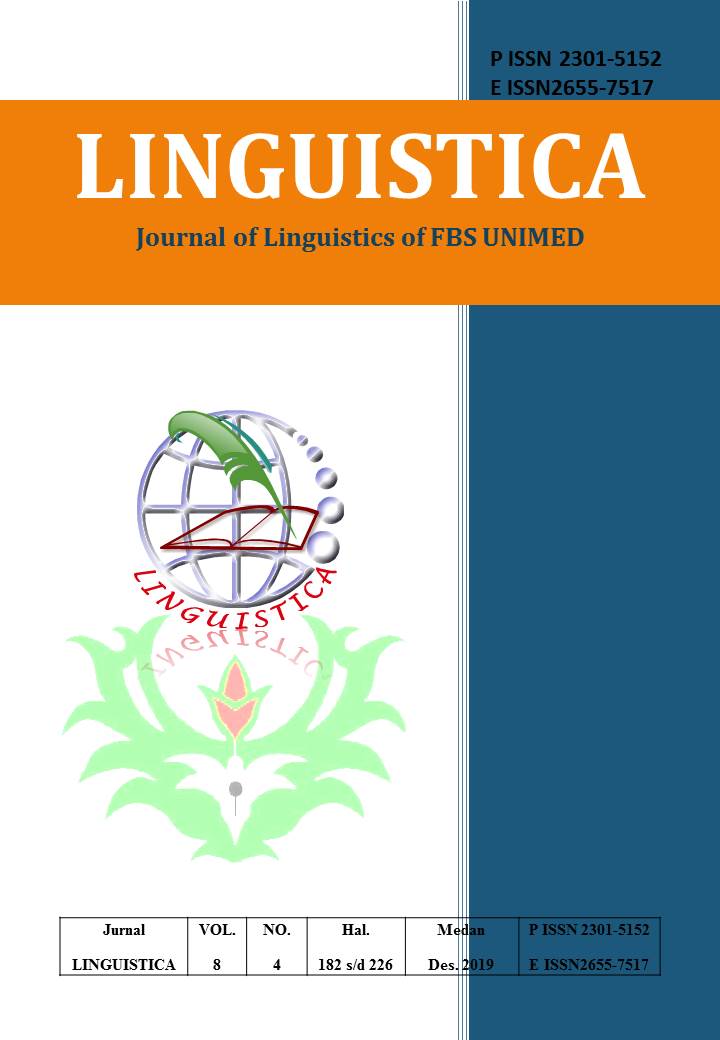INDIRECT SPEECH ACTS IN TOBA DREAM MOVIE
DOI:
https://doi.org/10.24114/jalu.v8i4.17036Abstract
This study focused on indirect speech act used by the main characters in Toba Dream movie. The objectives of the study were to: (1) find out the types of indirect speech acts used in Toba Dream movie, and (2) describe how types of indirect speech acts used in Toba Dream movie. This research was conducted by using descriptive qualitative method. The data of the study were all utterances uttered by the main character in Toba Dream movie and collected by watching the movie. The result of the study showed that there were four types of indirect speech acts found in Toba Dream movie, they were: representative, directive, commisive, expressive containing indirect speech acts in Toba dream Movie. Representative (25,71%) were realized by interrogative sentences and imperative sentences. Directive (21,43%) were realized by declarative sentences and interrogative sentences. Commisive (14,28%) were realized by declarative sentences. The main characters in Toba dream movie dominated the use of indirect speech act to express statement, command and warning. It showed that they could produce the language more politely and keep the hearer™s face while getting instruction or information indirectly.Keywords: indirect speech act, movie pragmatic, Toba DreamDownloads
Published
2020-02-08
Issue
Section
Articles
License
Copyright (c) 2020 Taufan Fadilah, Isli Iriani Indiah Pane

This work is licensed under a Creative Commons Attribution-ShareAlike 4.0 International License.
Authors who publish with this journal agree to the following terms:
- Authors retain copyright and grant the journal the right of first publication with the work simultaneously licensed under a Creative Commons Attribution License that allows others to share the work with an acknowledgment of the work's authorship and initial publication in this journal.
- Authors are able to enter into separate, additional contractual arrangements for the non-exclusive distribution of the journal's published version of the work (e.g., post it to an institutional repository or publish it in a book), with an acknowledgment of its initial publication in this journal.
- Authors are permitted and encouraged to post their work online (e.g., in institutional repositories or on their website) prior to and during the submission process, as it can lead to productive exchanges, as well as earlier and greater citation of published work (See The Effect of Open Access).
- This work is licensed under a Creative Commons Attribution-ShareAlike 4.0 International License.

